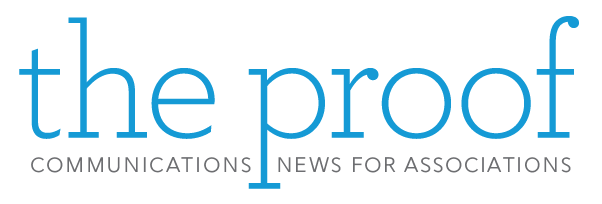You’ve spent time and money to create your association’s brand – choosing the right logo, colors, name, and type of content used in your communications with members, industry partners, and lawmakers. Then, you see your name presented in three different ways in an email, meeting handout, and social media post. Even if the organization requires review and proofreading of all communications by a marketing communications team (or person), the reality is that people don’t always take the time.

The solution? An organization-wide writing style guide that sets the standards for items such as how to identify the association name, how to capitalize references to committees and people, how to punctuate, when to use formal or informal wording, etc.
In “How to create a writing style guide for your brand,” the author suggests the following steps:
- Choose a stylebook to follow.
While the Associated Press Stylebook is the standard for news outlets and journalists, other options include the Publication Manual of The American Psychological Association for social science, politics, and engineering; the Chicago Manual of Style is used by many book publishers; and the Modern Language Association is used mostly in academic writing. Stylebooks for content and technical writing can be found here.
- Define your brand personality.
Is your organization tradition, formal, innovative, witty, caring, bold, or strong? Defining how you want members to perceive you helps determine the way your messages are presented.
- Set your brand voice and tone.
A formal tone is “Please submit your email address.” An informal tone is “Let us know how to reach you.” Defining the narrative tone (tell versus show), sentiment (emotional versus reserved), liveliness (calm versus excited), clarity (simple versus complex), and assertiveness (high confidence versus low confidence) is also necessary for a brand styleguide.
- Develop writing style.
A good style book helps with writing style details, but an association should define if content should meet specific Flesch Reading Ease or Flesch-Kincaid Grade Level standards, if sentences should be capped at a specific number of words, what specific terminology is preferred (e.g. colleague over coworker), and dialect. Punctuation is also important. It doesn’t matter if you choose to use periods at the end of headers, Oxford commas, quotation marks around certain words, or specific date and time formats – the key is to define the rules so copy is consistent.
- Share the style guide.
Google Doc or other document sharing platforms is a good way to make sure all team members received the guide.
Once the writing style guide is complete and distributed, be sure to plan a periodic review to make sure it includes the most up-to-date guidance. Also plan to keep track of style questions asked of marketing communications staff that are not addressed in the guide. If the same question is frequently asked, that information should be added to the guide.
For more detailed examples and references to other sources, see the original article here.









